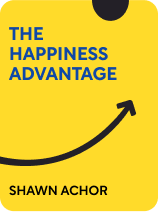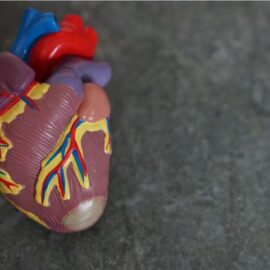

This article is an excerpt from the Shortform book guide to "The Happiness Advantage" by Shawn Achor. Shortform has the world's best summaries and analyses of books you should be reading.
Like this article? Sign up for a free trial here .
What is the ABCDE model? How can using this model improve your mindset?
The ABCDE model consists of five stages for improving your mindset: adversity, belief, consequences, disputation, and effect. It involves reframing your thoughts and beliefs to improve self-defeating behaviors and low self-esteem.
Here’s how to use the ABCDE model.
How to Use the ABCDE Model
In this article, you’ll learn how to use the ABCDE model to overcome adversity and reframe negative thinking. Practice is key in learning how to find and follow the path to success. When you are faced with a challenge, follow the ABCDE model:
1) A is for adversity, which is the challenging event or situation. Accept that you can’t change it.
2) B is for belief, which is how you interpret the event. How do you explain why this happened and how it will impact your future? Do you use a positive or negative explanatory style?
3) C is for the consequences you’ll face as a result of the challenging situation. Your consequences actually depend more on your belief than the adversity: Positive explanatory style (believing that the problem is short-term and a learning opportunity) increases the likelihood of positive consequences, while pessimistic framing (believing that the problem is permanent and disastrous) leads to negative consequences.
4) D is for disputation. When you catch yourself facing pessimistic beliefs and negative consequences, dispute them. Remind yourself that your belief is dictating this outcome, and that you can change your belief to a more optimistic one. Pretend that you’re disputing a friend’s pessimistic belief—challenge the basis for the belief, and consider other possible interpretations.
5) E is for Effect. When you implement your new beliefs, figure out the consequences of challenging your self-defeating beliefs. Likely the consequences will be positive, and will therefore reinforce positive beliefs about yourself and build your confidence.
In a phenomenon called immune neglect, people often underestimate how effective their psychological immune system is at helping them bounce back from difficulties. As a result, when facing adversity, people typically overestimate how unhappy they will be and for how long. However, if you’re confronting a truly significant problem, try decatastrophizing, or acknowledging that you’re facing a real challenge while reassessing whether it’s as bad as you first thought. Things might be bad, but they are rarely as bad as your mind makes them out to be.
Exercise: Use the ABCDE Model
Reflect on your typical reaction using the ABCDE model when facing adversity, and practice falling up:
- Describe a challenge you’ve recently dealt with or are currently confronting (such as tensions with your boss or financial issues at home).
- How could you frame this challenge with a positive explanatory style, in which you view the problem as local and temporary (instead of widespread and permanent)?
- Consider the three paths you could follow in how you react to this obstacle. What would the First Path look like (in which you circle the problem and ultimately create no change)?
- What would the Second Path look like (in which you create more negative consequences and put yourself in a worse position)?
- What would the Third Path look like (in which you learn and grow from the situation, so that you end up in a better position)?

———End of Preview———
Like what you just read? Read the rest of the world's best book summary and analysis of Shawn Achor's "The Happiness Advantage" at Shortform .
Here's what you'll find in our full The Happiness Advantage summary :
- How happiness isn’t the result of success, it’s the cause of it
- The benefits of happiness—from increased creativity to improved health
- Strategies for adopting a positive mindset and raising your happiness baseline






